The Latest from TechCrunch |  |
| Manifone Lets You Call People On Skype Without Needing Skype Posted: 14 May 2009 08:52 AM PDT
Crunch Network: CrunchGear drool over the sexiest new gadgets and hardware. |
| TechCrunch Berlin, June 10 - Panels and pitches from the German scene Posted: 14 May 2009 08:41 AM PDT
We also want to involve you in building the content for the event. So I have two requests. First, I’d love to hear from potential speakers who can give a quick-fire, 15 minute talk on any of the topics below. Secondly, we will also be running a pitch competition, so if you want to be considered for this please get in touch (criteria for pitching and contact details are below). This is your chance to get in front of the TechCrunch audience. We’re putting this event on with a number of great partners. Our Location sponsor is Zanox, a global market leader for performance-based online marketing. Our media partner is Gruenderszene, the magazine for founders and people interested in founding a company. Sevenload, the social media network for Web TV, will be streaming the event live onto TechCrunch.com. And Seedcamp, the Europe-wide travelling startup competition, will be working with us on content and we’ll be showcasing the winners of Seedcamp Berlin the previous day (June 9). We’ll obviously also be doing a wrap-up post after-wards, talking about the startups that pitched and any other news from the event. Crunch Network: CrunchBoard because it’s time for you to find a new Job2.0 |
| Drop.io Adds Seamless Screen-Sharing App With Present.io Posted: 14 May 2009 08:11 AM PDT
A new screen-sharing app launched today from drop.io, which keeps adding features to its private file-sharing service. The new product is called present.io and it lets you set up a screen-sharing presentation with multiple participants in just a few clicks. Present.io has a lot in common with drop.io’s chat feature which it added last month, except that it looks like this scales to hundreds of participants and is designed specifically for webinars and group presentations. Present.io requires no downloads or installs and pretty much instantaneously tracks whatever the presenter is doing on his computer with all of the watchers see on theirs. He can go through slides, open documents via a Scribd embed, play videos, show photos, play music, and move his cursor around, and everyone logged into the presentation sees the same thing. When he is going through slides, he can expand them into full-screen mode to show greater detail, and text chat is integrated into the app at the bottom so everyone can chime in. The service also includes a live conference call line. It looks pretty slick. Try it out here. One downside is that it appears to be a one-way tool. Participants can’t take control of the presentation to add their own media or drive the presentation, unlike other free screen-sharing apps such as Adobe’s Acrobat.com (which is my personal favorite). Unlike Acrobat.com or WebEx, you don’t see the presenter’s desktop, only the files he chooses to show within present.io. So this would not be something you would use to show something in a browser, which is unfortunate because demos often default to the browser when the presenter wants to go off on a tangent or forgot to add something to his deck. Other than those concerns, present.io is a solid addition to drop.io’s ever-expanding set of features. Below is a demo video describing present.io.
Crunch Network: MobileCrunch Mobile Gadgets and Applications, Delivered Daily. |
| Aha Mobile Scores $3 Million For Driver-Friendly iPhone App Posted: 14 May 2009 05:52 AM PDT
Aha Mobile, a startup that is developing a car-friendly informational iPhone app, has secured $3 million in Series A financing from Venrock. Currently in development, Aha’s product is focused on safely connecting drivers to relevant information about the world around them via a mobile device. Aha’s vision is to create an iPhone app that gives drivers the information they need outside the car, such as what’s traffic like ahead? Where is the nearest bathroom? Where can I grab a cup of coffee before my next meeting? Aha’s CEO, Robert Acker, would not reveal many details about the product since it’s still in development and testing but says that Aha will use the iPhone’s GPS capabilities and will use voice recognition technology to operate search queries. Acker says the app will also provide directions to users but will be focused on providing simple directions. A free app, Aha Mobile will be be driver-focused, but the company won’t reveal much more about the iPhone app that it is planning to release to the public during the summer. Currently, Aha is looking for drivers around the country to test a beta version of its application while it prepares for launch later this summer. People can apply to be a beta tester here and potentially win iTunes gift certificate if they participate in the beta. Crunch Network: MobileCrunch Mobile Gadgets and Applications, Delivered Daily. |
| eBuddy, The Swiss Army Knife For Instant Messaging, Is Now Available On Android Posted: 14 May 2009 05:07 AM PDT
The eBuddy application for Google’s open mobile OS is now available for free on the Android Market, and users can thus benefit from a single ID to chat with their friends on third-party communication platforms such as Facebook, Gtalk, Yahoo Messenger, Windows Live Messenger, ICQ and more. No Skype chat yet, which is a bit of a bummer, but apparently the startup is looking to add that functionality in their mobile clients in addition to all the other ones currently supported. I wonder which startup will be the first to bring Skype chat to Android, since neither Meebo nor eBuddy currently support it and both Nimbuzz and fring, competitors that do support Skype IM through their mobile clients, have yet to make their way to the open platform. What I like about the eBuddy application is that it has the ability to run in the background, so when you receive a phone call the IM service will keep running and even reconnect you automatically when the internet connection is lost. If you maintain multiple friend lists on instant messaging tools, eBuddy neatly organizes all your contacts in one list so you don’t even need to think about which third-party service you should be connecting to, and lets you seamlessly jump from one chat conversation to the next.
On a sidenote: I can’t grasp why Android Market doesn’t offer a search function on its regular website - only on mobile - but if you ever want to look for applications that are available on Android you might want to check out Cyrket.com. The eBuddy app is listed here. I got eBuddy, which is backed by a healthy €11.5 million (which currently converts to approximately $15.6 million), to share some numbers to get a feel of the traction it’s getting in the market, and came away fairly impressed. These are the numbers they pitched me: 20 million mobile downloads of the J2ME mobile client since its launch in June 2007, 5+ million unique monthly mobile users on eBuddy Mobile, and with almost 14 million downloads of eBuddy Mobile Messenger on GetJar the top ranked mobile program on the platform.
Stellar upwards-pointing trends indeed, but this type of hockey stick growth is of course no guarantee that all these new users will be efficiently monetized over the long run. Only time will tell if eBuddy finds a way to turn its successful product into a profitable business. Crunch Network: CrunchBase the free database of technology companies, people, and investors |
| Twitter’s Spectacularly Awful 24 Hours Posted: 14 May 2009 03:21 AM PDT
This is hardly the first time Twitter has had everyone up in arms, and it won’t be the last, but it’s pretty astonishing how the company seemed to solve one problem by creating two more. Sure, it’s easy to play desk-chair quarterback, and probably a bit unfair — but it’s also fun, and a good cautionary tale, so let’s do that. Here’s how the past 24 hours at Twitter went down: Problem 1: Twitter yanks the option to see @replies directed towards people you don’t follow. Why it was odd: Because it was just an option, and not the default setting. Users will never like options being taken away from them. Why remove an option? Well, we’ll get to that. Problem 2: Twitter writes a blog post explaining that the change will “better reflect” how people use Twitter. It claims this is based on usage patterns and feedback. Why it was odd: Has Twitter learned nothing from Facebook over the past few years? If you’re going to make a change, even if you’re sure it’s the right one, let the users know before you do it. That’s true even if you have no intention of listening to feedback — which may also be the right play, more on that later. Problem 3: Prominent Twitter employees start tweeting about their distaste about the change. This includes tweets of uncertainty from CEO Evan Williams. Why it was odd: If you really are making what you think is the right call, don’t waffle — and especially don’t waffle on the service you created to let everyone see your thoughts in public. Users will pick up on this waffling, smell blood and go in for the kill. Problem 4: Twitter writes a post the next day containing the following sentence, “The engineering team reminded me that there were serious technical reasons why that setting had to go or be entirely rebuilt…” Why it was odd: This absolutely should have been in the first post on the matter. Hell, it should have been the key subject of the first post. Now it just seems like Twitter was being purposefully misleading about the reason it removed the option. I was at dinner the previous night discussing this change. Everyone at the table agreed it was clearly done for scaling purposes, if we all knew that, why did a co-founder of the company have to be “reminded” about it? He didn’t. It was just a mistake not to be honest about that upfront.
Why it was odd: Poor timing. Users wanted to discuss this new post and give feedback to Twitter via Twitter, but could not. Problem 6: Twitter follows up that second blog post with a third post just a few hours later saying it is halfway reverting the changes. Why it was odd: Halfway doing something is never a good idea. If you change something or don’t change something you will piss off some people, but if you half change something, you’ll piss off all those people. Problem 7: These changes appear that they will make the service much more complicated. Why it was odd: Keep it simple, stupid. That’s how Twitter was born, how it grew and why it is what it is. Twitter is trying to placate its users with these convoluted changes — that is just not a good idea in my book. Do or do not, there is no try. Problem 8: A server failed, making Twitter unusable for several hours. Why it was odd: Insult to injury. A bad day: It’s easy to play Monday morning quarterback, but it’s also no stretch to say that Twitter badly mishandled this situation. It’s not entirely clear if it was the very small percentage of users using the feature (3%, according to Twitter API lead Alex Payne), or if it was the taxing of Twitter’s servers that led to the decision of the removal. It was likely a combination of the two that was borne out of the latter. But that needed to be stated from the get go. Removing an option, no matter what percentage of users use it, generally doesn’t seem like a good idea. Those who do use it, clearly love it, and others probably like the idea of having that option as a safety blanket of sorts, just in case they ever want to use it. That’s not to say it can’t be done — but if you’re going to do it make sure you’re 100% committed to removing it.
At the end of the day, the product is yours and you should be the ones making the call on which features stay and which ones go. It’s of course good to listen to your users, but most of them probably have no idea what they’re talking about when it comes to your product, so it should almost never go beyond listening. If it does — as it did today with Twitter — there’s clearly a problem. A plan that wasn’t thought through will lead to these types of days. Of course, Facebook has had plenty of these, as has Digg and so has Twitter (on a much smaller scale) — apparently, history repeats itself. Who knew? In terms of the actual feature removal, I’m up in the air about it. I kind of like the idea of simplifying my stream by removing @replies to users I don’t follow. I might miss that at first, but eventually I’d forget it was ever an option. At the same time, it is a good discovery tool — especially for new users. But what absolutely needs to happen is very clear to me: Twitter needs to either kill it completely or bring it back completely. But what has me even more worried is the longer term second solution. You know, the new feature talked about in the third post that will give users “far more control over what they see from the accounts they follow.” That sounds a lot like the convoluted social tangle Facebook has created due to the privacy concerns of its users. As an asymmetric social network, Twitter shouldn’t have those issues. But there’s a potential ray of hope in this second solution: Filters. I want Twitter to keep the service simple and stay bare-bones, but it really needs a high level way to filter the people you follow. Yes, other services do this, but having it on Twitter actual could eliminate the concern about too much noise in @replies. It is working beautifully for FriendFeed, and is starting to work for Facebook. There’s a way to redeem yourself from today’s fiasco Twitter: Remove all data restrictions and simply give us filters. But maybe don’t listen to me — I’m just another user bitching, after all. Crunch Network: MobileCrunch Mobile Gadgets and Applications, Delivered Daily. |
| PUMP Is A Great P2P Video Application, And Then Some Posted: 14 May 2009 02:06 AM PDT
Update: forgot to mention that you need an invite code to download the software for now. Fortunately, we get to give away no less than 15,000 for TechCrunch readers. Code: PUMP-TECHCRUNCH-USA-15000. PUMP is a desktop application that lets you search for and download the Flash versions of videos from a variety of services, including YouTube, Dailymotion, BitTorrent search engine Mininova, Jamendo, LegalTorrents and Google Torrent, and the results are presented in orderly tabs. You can even opt to include any other search engine you think is missing from the list. Videos can be played in practically any format and shared from within the interface on a multitude of social networks like Twitter, Facebook and FriendFeed. The app even doubles as a full-fledged Web browser and podcasting tool thanks to the ability to import RSS feeds into the system. It makes for easy management and discovery of videos, but what I really dig about the service is that is able to sync and convert content from both your imported iTunes and local PUMP libraries to your iPhone, iPod Touch or other mobile phones. It’s also a full-fledged BitTorrent client, which is little surprising considering VIPeers is also the company behind torrent sharing client Podmailing. Of course, we would never suggest that you’d be using PUMP to download any copyrighted content or anything. The downsides: only available for Windows Vista and XP for now (it also uses IE for browsing), an uninspired UI and a bit of a memory drain. But don’t let that spoil the fun.
Crunch Network: CrunchGear drool over the sexiest new gadgets and hardware. |
| Google’s Last MySpace Payment: $75 Million On June 20, 2010 Posted: 13 May 2009 06:43 PM PDT
Until now the details of the contract have been kept confidential. But we’ve recently reviewed a copy of both the original agreement (a binding term sheet) as well as the amendment signed in 2007 - in fact I’m reading it right now. The guaranteed payment clauses, which lay out the dates and sizes of the payments due to News Corp., call for $300 million to be paid by Google over the final year of the agreement. Here are the revenue guarantees: January 1, 2007 through June 30, 2007: $50 million, paid quarterly pro rata All MySpace has to do to get the guaranteed payments is make certain search page view requirements. They’ve made those page view requirements easily, says our source, mostly by destroying the user experience. Any search on MySpace by default returns Google web results, which is rarely what the user wants to see. But MySpace has a history of monetizing their site to death, damn the user experience. That may explain part of the rise of Facebook at their expense. For their part, Google is said to be unhappy with the results. Perhaps it’s because MySpace is tricking users into doing Web queries, but click through on ads is rumored to be abysmal, and conversion on those click throughs is even worse. In other words, Google, Google advertisers and users are unhappy, but MySpace is just fine, thank you. One part of the deal which is reportedly doing well is display advertising, which is separate from the guaranteed revenue payments. Google is able to offer display advertisers deep reach into MySpace’s tens of millions of users, our source says. But it’s not clear MySpace, which has its own sales team and self service ad product, is all that interested in Google display ads going forward. At this point Google probably feels like it’s paying off a mortgage on a house worth half of what it paid for originally. They may be glad to just be able to walk away from it all as soon as possible. Crunch Network: CrunchBase the free database of technology companies, people, and investors |
| FriendFeed Enables People/Group Tracking Posted: 13 May 2009 06:24 PM PDT
While it may not be so obvious at first, this is useful because you can custom tailor FriendFeed to use even when you’re not on the site. The way I’ve been using it for several months now is to create groups for people/things I’m particularly interested in. But that would still require that I go to FriendFeed to check those groups. Now I can just get pinged over IM every time something I’m looking for comes up. My colleague Steve Gillmor should love this, because this allows you to basically track something without being actively engaged in the service. It doesn’t yet work for saved searches on FriendFeed — which would allow you to track any keyword, but you can imagine that will come soon as well. Track is a feature that Twitter used to have to ping people when a keyword was said. It had to discontinue the service when Twitter kept crashing last year as it grew it size. It’s still supposedly coming back one day, but it would seem FriendFeed, once again, may beat them to it. And while tracking keywords is interesting, I’m actually more interested in people track — which is what this is. And since FriendFeed of course imports Twitter messages, this basically is a track of people on Twitter too. And if you really want to get fancy, you can just track when a user likes something on FriendFeed and have it ping you, or a number of other options. And this doesn’t have to just be over IM. You can get these notifications over email or using FriendFeed’s AIR-based popup notifier. Slick.
Crunch Network: CrunchGear drool over the sexiest new gadgets and hardware. |
| Stuck On Hotmail, Yahoo Mail, Or AOL? Gmail Just Made It Incredibly Easy To Switch Posted: 13 May 2009 05:09 PM PDT
The new feature, which is being powered by TrueSwitch, supports importing from all of the usual suspects, including AOL, Yahoo, Hotmail, and dozens of others (you can find a whole list here). To start with it is only enabled on new accounts, with support for existing accounts being added over time (Google warns that this roll-out will be considerably slower than normal). You can also optionally choose to import messages sent to your old account for up to thirty days.  Now, there have been ways to import your mail archive into Gmail through other routes, but for the average computer user these were both too confusing and time consuming to be considered viable options. Now things are as easy as entering your other mail service’s password and letting Gmail go to work over the next 24-48 hours, importing all of your Email and contacts. It’s making a once frustrating process nearly painless, and it’s going to attract new users in droves. Of course, users will still be switching to a new Email address. This shouldn’t be a problem for users with providers that support POP3 or mail forwarding (which would allow you to have Emails sent to your old mailbox forwarded to your new Gmail inbox), but not all webmail providers support these features. Crunch Network: CrunchGear drool over the sexiest new gadgets and hardware. |
| Contenture Wants To Fail Whale Your Ad Network Posted: 13 May 2009 05:00 PM PDT
The service has been getting some buzz over the past few months, but mostly because no one seemed to know what the hell it was all about. An email today finally revealed their model. Contenture wants to be the “anti-ad network.” What it means by that is that it wants sites to adopt their monthly-fee based network to offer visitors the option to do things like turn off ads. Yes, this would basically turn your site to the subscription-based model. But there’s a somewhat interesting twist. Contenture wants to sign up a bunch of sites to this model and have users pay one flat monthly fee to have access to all of these sites. That money would then be distributed to all of these sites. These sites could determine what Contenture subscribers get as a part of their subscription. Some may lose the ads, some may have special commenting ability, etc. A similar model has been tried by the likes of TipJoy and others, but grouping sites together and offering users a place to pay one-fee for multiple sites is interesting if nothing else. Plus the site has a comic homepage that features a drunk Twitter Fail Whale and makes fun of its competitors. That’s pretty cool in our book. The service is still in private beta testing, but apparently it’s getting ready to launch on May 21. Disclosure: This morning for four hours Contenture sponsored our CrunchCam. Crunch Network: CrunchGear drool over the sexiest new gadgets and hardware. |
| CBSNews.com Goes From Cluttered With Information To Cluttered With Pictures Posted: 13 May 2009 03:46 PM PDT  CBSNews.com is undergoing a major overhaul and redesign of its sites to make them easier to navigate, more visually compelling, faster and more focused on driving users to content. The new home page features a rotating list of top stories on the left, next to the list of the latest and most important headlines. CBS News programs, as well as the latest videos, photo galleries and blogs, are all highlighted on the page. CBS News also plugs its program sites, including Evening News, Face the Nation, 60 Minutes, 48 Hours, and Sunday Morning, on its homepage. CBS says that the company applied technology from its sister site, CNET.com, to deliver pages from its servers to users’ screens more rapidly. Dan Farber, CNET’s editor-in-chief, oversaw the redesign. Here’s what CBSNews.com used to look circa 2000 (left) and currently (right):  As you can see from the screenshot of the new design at the top of the post, this is a big improvement. The additional of images definitely make the site more aesthetically pleasing and easier to scroll through. But it seems that the new site is now a little too cluttered with pictures. Farber says the news site has undergone two major redesigns over the past ten years. A small percentage of random visitors to CBSNews.com will see the new look for pages on the site. CBS Says the site is still a work in progress and is undergoing changes and upgrades frequently. This new redesign may be part of an effort to catch up to ABCnews.com and MSNBC.com (NBC’s news site). CBSNews.com only drew 3.2 million unique visitors in U.S. in April compared to 4.4 million for ABCnews.com and 30.7 million for MSNBC.com, according to ComScore. Crunch Network: CrunchGear drool over the sexiest new gadgets and hardware. |
| Review: Verizon MiFi 2200 Mini Hotspot Posted: 13 May 2009 03:08 PM PDT  Short version: We've loved the MiFi mobile router since we first laid eyes on it back at CES. After a few days of playing with the Verizon MiFi 2200, we still love it just as much - but with one hangup: the nasty monthly bill. After a trivial hiccup with the activation, we had 4 computers up and running in minutes. Speeds in our area are about average for the local EVDO Rev-A network, and we've had absolutely no connectivity drops in our 2 days of testing. Short version: We've loved the MiFi mobile router since we first laid eyes on it back at CES. After a few days of playing with the Verizon MiFi 2200, we still love it just as much - but with one hangup: the nasty monthly bill. After a trivial hiccup with the activation, we had 4 computers up and running in minutes. Speeds in our area are about average for the local EVDO Rev-A network, and we've had absolutely no connectivity drops in our 2 days of testing. |
| Kindle Publishing Now Open To All Blogs Posted: 13 May 2009 03:04 PM PDT
But the biggest limiting factor of this so far is that only the big blogs have been included in the blog directory. Starting today, anyone can make their blogs available via the new Kindle Publishing for Blogs Beta program. All you have to do is make your blog’s feed available to the Kindle Store, and Amazon will do the rest, formatting your content for the device. According to the email from Amazon, after a few easy steps, your blog should be up and ready to go in the Kindle Store after about 12 to 48 hours of processing. Not bad. As with blogs currently in the program, these new blogs will get 30% of the monthly blog subscription price for every subscriber Amazon signs up. In a world where mobile app developers traditionally keep 70% or more of the revenues, 30% seems awfully low. And exactly how much Amazon will charge for each blog isn’t totally clear, other than Amazon says it will “define the price based on what we deem is a fair value for customers.” Most blogs currently go for $1.99 a month. Unfortunately, even if you want to, you can’t give your blog away for free on the device. Amazon has that WhisperNet to maintain, after all. As a Kindle owner, I currently subscribe to a few of my favorite blogs, but for most of the rest I use Instapaper to bookmark articles and sync them over email to my device (which does cost a ridiculous $0.15 an email unfortunately — but Instapaper sends only one digest a day). The bottom line is that with 30% of the subscription price going to publishers, this isn’t likely to be a big source of income for most sites. There are simply too many blogs and the Kindle market is simply not that big. And the people who will pay for blogs on it is even less. Crunch Network: MobileCrunch Mobile Gadgets and Applications, Delivered Daily. |
| KISS FAIL. You Can Now See Twitter Replies Sometimes, Except When You Can’t. Posted: 13 May 2009 01:45 PM PDT
Previously, if you wanted to see another user’s @replies even if they were talking to someone you weren’t following, you had to select that option in the settings. Some people had, and enjoyed it. But the default setting for that was off, so Twitter simply removed the option to turn it on. But some users loved it so Twitter is now turning it back on — kind of. Apparently, soon you will be able to see these @replies again but only when a person is using them when not clicking the “reply” button. So basically, you can see when someone is replying to someone else but only when they’re not really replying to them. Yeah, this is going to confuse the hell out of people. Remember “Keep It Simple, Stupid“? Yeah, this is the opposite. I consider myself a pretty savvy Twitter user and I had to read it twice to understand just what the hell Twitter meant. I also just had a hilarious conversation with fellow writer Jason Kincaid, where we debated just what exactly Twitter meant. The fact that we had to have that conversation is not a good sign. Twitter also claims to have second fix in mind, that will involve giving users more control over what exactly they see from which users. This is getting really complicated, quick. It sounds like the convoluted settings mess Facebook has become. This whole situation has turned into an absolute disaster. Twitter claimed it was just removing a feature that relatively few people used, but if it really believed that, it should have stuck with it. Instead, it admitted that the move was done to help with scaling issues. “We learned a lot,” is the title of Twitter’s post. That’s really code for, “a lot of people bitched, and so we’re half going back to the old way.” Don’t go half. Either do it or don’t do it. You may have been taught a lesson by your users, but you’re not heeding the lessons of other services in the past that have over-complicated things. Crunch Network: CrunchBoard because it’s time for you to find a new Job2.0 |
| DocStoc Charges Out Of Beta With DocCash, APIs, And More Blog-Like Homepage Posted: 13 May 2009 12:29 PM PDT
A year and a half after launching at our first TechCrunch40 conference, document-sharing service Docstoc is taking off its “beta” label with a homepage redesign, open APIs, and a new revenue-sharing model called DocCash. The service is growing at a healthy clip, with 3 million documents uploaded and 1.6 million unique visitors a month in the U.S., according to comScore. (The company’s internal Google Analytics shows 4.8 million unique visitors worldwide). DocStoc is still much smaller than its rival Scribd, but hopes to catch up with some of its changes (as does Issuu, another document-sharing service that keeps adding features). In order to encourage more activity and higher-quality document uploads, DocStoc is introducing DocCash. The company will be splitting AdSense revenues 50/50 with anyone who uploads documents and wants to opt into the service. Right now the ads only appear on Docstoc pages, but will eventually include Flash ads in DocStoc’s embedded Flash player as well. (See video tutorial below). DocStoc is also unveiling a new homepage with a much more blog-like feel. Featured documents a will be selected by an editorial team, more images will be highlighted, and different document categories are highlighted on the left (including business, technology, legal, and current events). Former TechCrunch writer and Website designer Mark Hendrickson worked on the new homepage. It looks much cleaner now, with topical documents and those related to breaking news now being highlighted (I’ve embedded Barack Obama’s tax return below—his income was $2.7 million last year!). Finally, it is opening up its APIs so that other sites can integrate DocStoc functionality into their own sites. These APIs allow other sites to include previews and document embeds, document search, use DocStoc’s document viewer, and upload documents directly to DocStoc. If DocStoc is ever going to catch up to Scribd, it will have to keep adding features and make sure the best docs are uploaded to it service. The APIs and DocCash might help, as well as little things like upload speeds (DocStoc seems faster to me). But with rising popularity also comes rising headaches. Already authors are beginning to complain about book piracy. Uploading copyrighted works is against the terms of service of both DocStoc and Scribd, but policing such usage becomes harder and harder with the number of documents getting into the millions.
Crunch Network: CrunchBase the free database of technology companies, people, and investors |
| Imeem About To Expand iPhone Music Storage By Way Of The Cloud Posted: 13 May 2009 11:33 AM PDT
The Imeem app has already been submitted for App Store approval and could be released any day, we’re hearing from a reliable source. In terms of what it will offer, you can probably expect it to be about the same as the Android version. That means access to Imeem’s library of music and perhaps more importantly, access to your own collection of songs from the cloud, if you use Imeem’s upload service to put your music on their servers. Of course, you have to pay for that. But if you’re willing to shell out $99 a year for their most premium plan, it means you can access 20,000 of your songs from your iPhone from anywhere (there are lower-cost version with less storage as well).That’s around 80GB of music, obviously a lot more than an iPhone or iPod touch can hold. But one tricky thing about this on the iPhone is its close ties with iTunes, which means that many of its users probably have some DRM-protected music, which won’t work over Imeem’s streaming service. But I assume the new iTunes Plus, DRM-free variety (which the entire iTunes store was recently converted to) will. And I’m sure you’ll be able to buy new music you hear on the Imeem app with one click that takes you to the iTunes store on the iPhone. This has been working out pretty well for Pandora. Cloud-based streaming of music makes a lot of sense. It gives you a single place to access your music from anywhere, without taking up valuable space on your devices. Lala is another service doing this with a still unreleased iPhone app that we got an early look at. It makes so much sense, in fact, that I suspect Apple will eventually get into this game as well. It almost has to with HD movies and television shows at some point because most people simply do not have enough storage space even on home systems to buy that content to their heart’s content — which of course, Apple would love. Naturally, Apple would want to have an option to pull your music off of the cloud to take on trips where you don’t have web access as well — that’s something that won’t work so easily with Imeem’s solution. Imeem’s iPhone application will undoubtedly have another major downside that the Android version does not: The inability to run in the background. That’s one of the killer features of the Android version — I can turn it on and leave it on while I do something else. Compare this to Pandora on the iPhone which shuts off as soon as you exit it. Seeing as Apple doesn’t allow third-party apps to run in the background, that will be the case with Imeem too. Still, given the range of music Imeem offers and this cloud-based option, I’m definitely looking forward to this iPhone app. The Android version actually won the Crunchie this year for Best Mobile Application — even beating out Pandora for the iPhone. Look for the iPhone version soon in the App Store. Crunch Network: MobileCrunch Mobile Gadgets and Applications, Delivered Daily. |
| Google Adds 30,000 App Users In Biggest Enterprise Deal Yet Posted: 13 May 2009 11:28 AM PDT  Since Gmail's birth in 2004, Google has steadily built a powerful cloud-based email platform that's chock full of innovative features including offline access, chat, search, mobile access and more. Google saw the opportunity to integrate Gmail and apps, like docs and calendar features, into the enterprise space and rolled out premier editions of Apps catering to the business community. Today, Google announced that it has struck a partnership with Valeo, an automotive components manufacturer, to deploy Google Apps on the company's entire global workforce, which totals about 30,000 internet-using employees. Since Gmail's birth in 2004, Google has steadily built a powerful cloud-based email platform that's chock full of innovative features including offline access, chat, search, mobile access and more. Google saw the opportunity to integrate Gmail and apps, like docs and calendar features, into the enterprise space and rolled out premier editions of Apps catering to the business community. Today, Google announced that it has struck a partnership with Valeo, an automotive components manufacturer, to deploy Google Apps on the company's entire global workforce, which totals about 30,000 internet-using employees. |
| Hookers No Longer Welcome On Craigslist Posted: 13 May 2009 11:04 AM PDT
After coming under increasing scrutiny from various state attorneys general for the open prostitution listings in its “erotic services” category, Craigslist is now folding in the face of criminal charges. The company said in a blog post that it will replace the erotic services category with a new “Adult services” category where each ad will be individually reviewed before posting. Existing ads in the erotic services category will remain for seven days, but already new ads are not being accepted in that category. People trying to place an ad in the adult category are reminded: “Ads suggesting or implying an exchange of sexual favors for money are strictly prohibited” and “Ads including pornographic images, or images suggestive of an offer of sexual favors are strictly prohibited.” A quick glance at the erotic services section for New York City shows a lot of flesh with ads promising “IT’S NOTHING LIKE THE FIRST TIME!!” and “ASIAN HOTTIE . . . TO FULFUILL YOUR DREAM . . . WILLING AND READY.” Meanwhile, the adult services section for NYC is slightly less explicit. It has a lot more listings for “massages” and “sensual bodyrubs.” The first screenshot below is from an adult services ad, the second is the erotic services page. So much for truth in marketing. Update: in a blog post about to go up entitled “Striking a Balance,” which Craigslist just sent us, the company states:
It also points out that its moderation system is “the most successful system ever conceived for eliminating inappropriate activity from a massive internet community,” whereas inappropriate listings in print classifieds can’t even be removed. Of course, there are also many more listings on Craigslist than in any single paper and up until now there has been no pre-posting review whatsoever, so I am not sure that is something to brag about.
Crunch Network: CrunchGear drool over the sexiest new gadgets and hardware. |
| Twitter Waffles About Why @Replies Were Dumbed Down Posted: 13 May 2009 11:03 AM PDT
At the time of the change co-founder Biz Stone wrote an oddly condescending blog post, stating that the feature was an “undesirable and confusing option” which was exactly why they took it away. This didn’t make much sense given the fact that the option was nestled in the settings menu and wasn’t the default. Most people didn’t even know it was there. This morning in a new blog post titled Whoa Feedback, Stone has revealed the true reason behind the change: it’s an engineering problem. Stone writes “The engineering team reminded me that there were serious technical reasons why that setting had to go or be entirely rebuilt—it wouldn’t have lasted long even if we thought it was the best thing ever.” This is a PR failure on Twitter’s part. The company was totally misleading about their motivation for killing the option, and now they’re forced to fess up because they’d have a tough time re-enabling it. Granted, most people don’t use the feature, and it is confusing. But those are merely supporting arguments - the company could have easily tucked the feature away in a set of advanced options for power users. Crunch Network: CrunchGear drool over the sexiest new gadgets and hardware. |
| Can’t Wait For iHulu? NBC Mobile Has Got You (Partially) Covered Posted: 13 May 2009 10:05 AM PDT  I don't know about you, but the novelty of watching random YouTube videos on my iDevice wore off pretty quickly. And with iHulu (a.k.a. an official Hulu iPhone app) nowhere to be found, there aren't too many other quality alternatives for viewing free content on your iPhone or iPod touch...until now. CNET points out that NBC's mobile site - m.nbc.com - provides access to full episodes of many of the network's most popular shows, including Heroes and The Office. The catch - the episodes are broken up into 7+ minute segments, each with a commercial intro. However, on the bright side, once the show begins to buffer you can manually fast forward past the commercial to the good stuff. I don't know about you, but the novelty of watching random YouTube videos on my iDevice wore off pretty quickly. And with iHulu (a.k.a. an official Hulu iPhone app) nowhere to be found, there aren't too many other quality alternatives for viewing free content on your iPhone or iPod touch...until now. CNET points out that NBC's mobile site - m.nbc.com - provides access to full episodes of many of the network's most popular shows, including Heroes and The Office. The catch - the episodes are broken up into 7+ minute segments, each with a commercial intro. However, on the bright side, once the show begins to buffer you can manually fast forward past the commercial to the good stuff. |
| A Revolution Begins: OpenCandy Has A Board Meeting And No One Shakes Hands Posted: 13 May 2009 09:35 AM PDT
If I could take a poll, though, it’s clear that the people who have hands thrust at them more than they thrust hands at others are more likely to be opposed to hand shaking. CEOs and journalists, for example, tended to agree. Business development and sales types hate the idea. But whatever people’s individual feelings on hand shaking, one thing is clear. Some people are using this as a cue to stop the barbaric practice once and for all. And yesterday one brave company and its board of directors were willing to publicly admit that they held an actual board of directors meeting where no one shook hands. That was unthinkable a week ago. From Chester Ng, who twittered this morning: “@arrington’s “handshake revolution” has begun! We kicked off our BOD meeting w/ awkward yet sanitary fist-bumps w/ @davidcowan @jamescham“ David Cowan, a partner at Bessemer who was at the meeting, agrees: “Arrington makes sense: Hand Shaking Is So Medieval. Let’s End It. » link to Hand Shaking Is So Medieval. Let's End It. by @arrington. The objections are ridiculous.” A revolution has begun. lol. All we need now is a proper logo for the cause, because sooner or later Marvel is going to send us another letter threatening a lawsuit if we keep using the Iron Man image. Create one that we like and win a free TechCrunch Tshirt. Just link to it below. Crunch Network: CrunchBase the free database of technology companies, people, and investors |
| Don’t Fight The Stream: Facebook And FriendFeed Redesigns Are Paying Off Posted: 13 May 2009 09:00 AM PDT
When Facebook redesigned its homepage in early March in a wholehearted embrace of the real-time activity stream as its primary user interface, everybody complained. “Why on earth does the world need 2 Twitters?,” asked one of my friends on Facebook. Twitter-envy aside, some early data suggests that embracing the stream was the right decision after all. Since the redesign went into effect, Facebook’s growth has accelerated. After flat 0.3 growth in February, Facebook added nearly 4 million unique U.S. visitors in March (up 6.6 percent over February), and another 5 million in April (up 10.3 percent over March) to end at 67.5 million domestic uniques, according to comScore. That puts it within kissing distance of MySpace’s 71 million unique U.S. visitors in April, by the way (see chart below), and keeps a healthy 50-million visitor gap with Twitter, which added 8 million U.S. visitors in April alone.
Facebook is not alone when it comes to wading in the stream. AOL has found religion as well and is injecting “lifestreams” into everything from Bebo to Socialthing to AIM. On the other end of the spectrum, is tiny FriendFeed, which is one big activity stream. Despite leading on the innovation front, FriendFeed has been struggling when it comes to gaining users. But a redesign that went into beta in early April, and is now the default homepage seems to be paying off with a 28 percent rise in unique visitors in April and more time spent on the site ComScore only estimates 188,000 unique visitors in that month (Quantcast puts it a bit higher at 241,000), so it is still extremely niche, but at least its numbers are now headed in the right direction. The redesign makes the whole feed update continuously now so you can really watch your what your friends are doing on the Web as they are doing it. Complain all your like, but the stream is here to stay and it will only get stronger.
Crunch Network: CrunchBase the free database of technology companies, people, and investors |
| You are subscribed to email updates from TechCrunch To stop receiving these emails, you may unsubscribe now. | Email delivery powered by Google |
| Inbox too full? | |
| If you prefer to unsubscribe via postal mail, write to: TechCrunch, c/o Google, 20 W Kinzie, Chicago IL USA 60610 | |
 Now here’s something interesting. French telecoms startup
Now here’s something interesting. French telecoms startup  As we
As we 


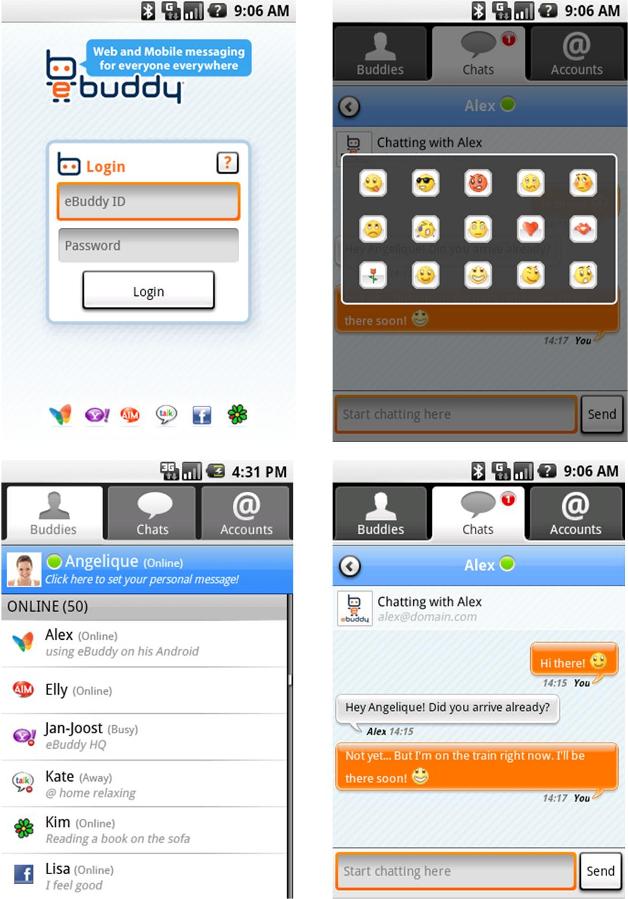

 Twitter just went through an awful 24-hour stretch. It included taking away a feature some people loved, probably being misleading about it, getting a huge amount of backlash, halfway bringing the feature back, and getting railed by the press for it all — with bouts of downtime mixed in for good measure.
Twitter just went through an awful 24-hour stretch. It included taking away a feature some people loved, probably being misleading about it, getting a huge amount of backlash, halfway bringing the feature back, and getting railed by the press for it all — with bouts of downtime mixed in for good measure. Problem 5: Twitter goes down for its scheduled maintenance, the second such one during the middle of a work day, in a week.
Problem 5: Twitter goes down for its scheduled maintenance, the second such one during the middle of a work day, in a week.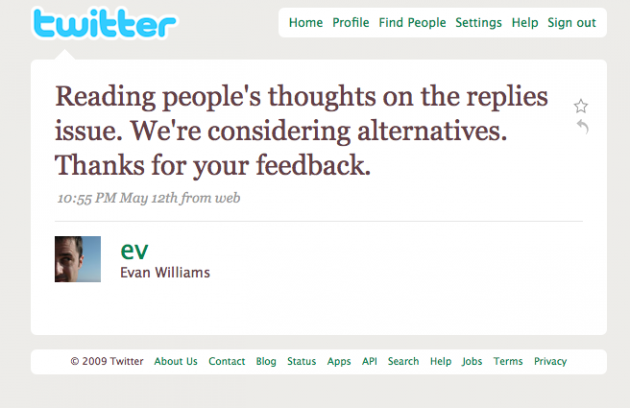
 When you start introducing conditional statements into the equation, it very quickly complicates things. That has never been what Twitter is about and should not be what it becomes about. As I said, it’s their product, but in my opinion, that would be a mistake.
When you start introducing conditional statements into the equation, it very quickly complicates things. That has never been what Twitter is about and should not be what it becomes about. As I said, it’s their product, but in my opinion, that would be a mistake. File-sharing service
File-sharing service 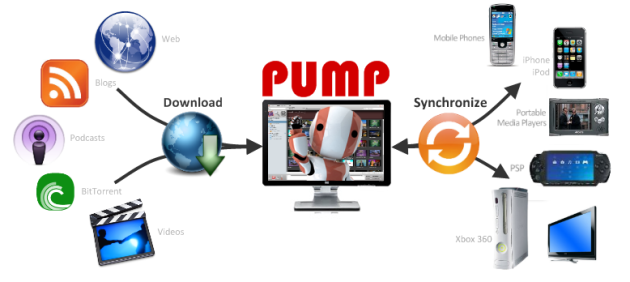
 The landmark search
The landmark search  While Twitter is busy removing features, or
While Twitter is busy removing features, or 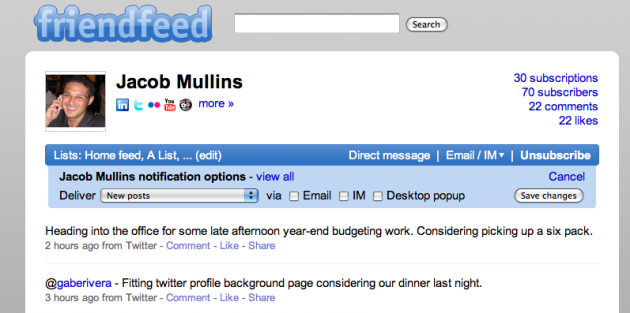
 Since launching back in 2004, Gmail has set the gold standard for webmail clients, offering a large amount of storage and a highly usable interface, free of charge. But for many people it has remained out of reach - no matter how appealing Gmail might be, they’ve racked up thousands of messages on other services that they simply can’t give up. Today, that changes. Gmail just
Since launching back in 2004, Gmail has set the gold standard for webmail clients, offering a large amount of storage and a highly usable interface, free of charge. But for many people it has remained out of reach - no matter how appealing Gmail might be, they’ve racked up thousands of messages on other services that they simply can’t give up. Today, that changes. Gmail just 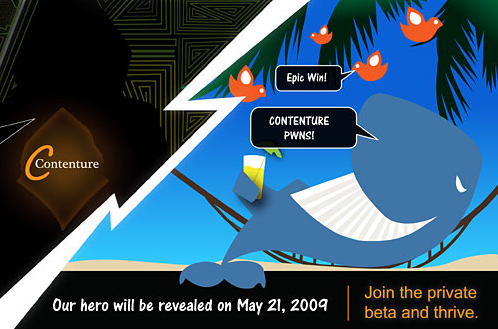 The web is increasingly filling up with ads. Many sites, including this one, have a bunch of them all around with the hopes that you’ll find one relevant to you, and click on it. Of course, most of you don’t. And if you do, it may be by accident. As you can tell, I’m not exactly bullish on the model. But the problem is that there are few alternatives.
The web is increasingly filling up with ads. Many sites, including this one, have a bunch of them all around with the hopes that you’ll find one relevant to you, and click on it. Of course, most of you don’t. And if you do, it may be by accident. As you can tell, I’m not exactly bullish on the model. But the problem is that there are few alternatives.  One of the neat little sub-features of Amazon’s Kindle is being able to
One of the neat little sub-features of Amazon’s Kindle is being able to  Remember Twitter, that super simple service for sending messages? Well, last night they
Remember Twitter, that super simple service for sending messages? Well, last night they 
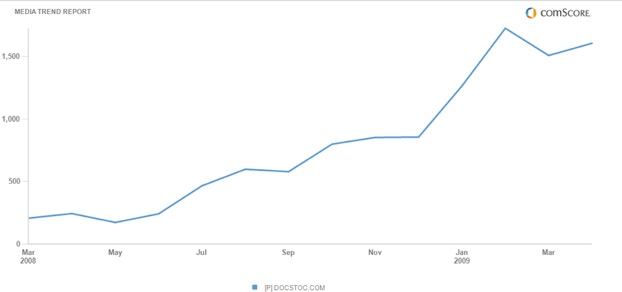

 Easily my favorite app on the Android platform is
Easily my favorite app on the Android platform is 

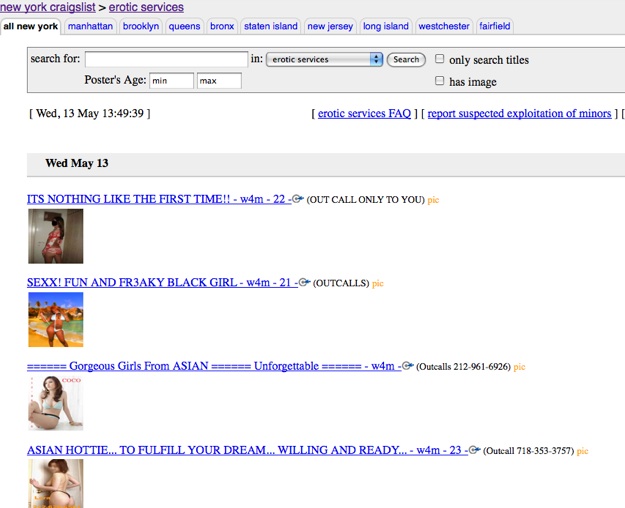
 Surprise, surprise. Last night Twitter
Surprise, surprise. Last night Twitter  Over the weekend I wrote a post on the disgusting habit of hand shaking:
Over the weekend I wrote a post on the disgusting habit of hand shaking: 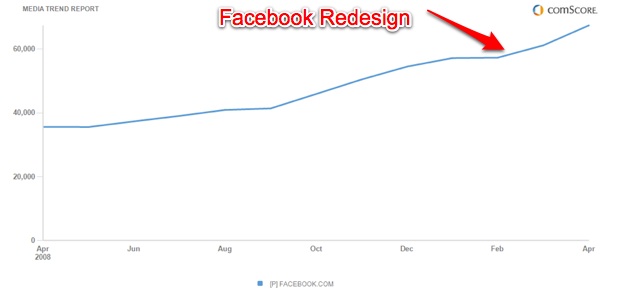
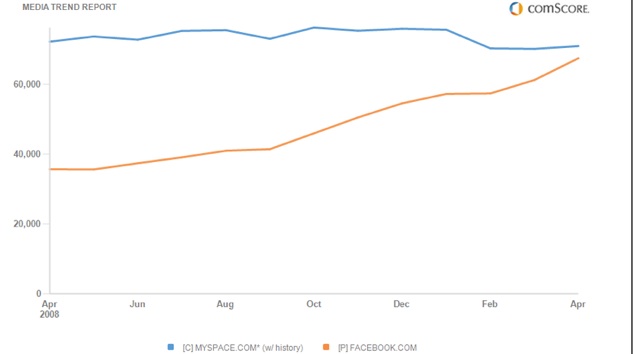
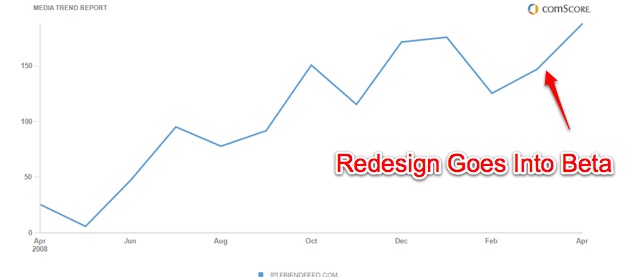
No comments:
Post a Comment